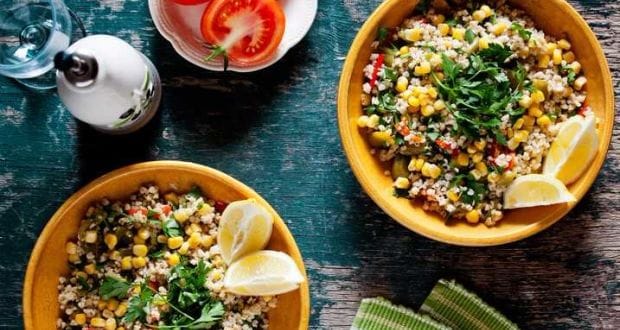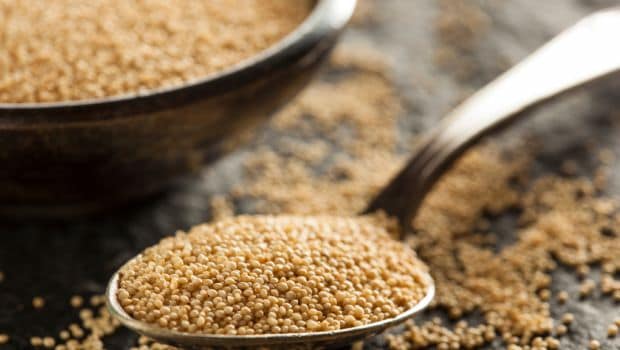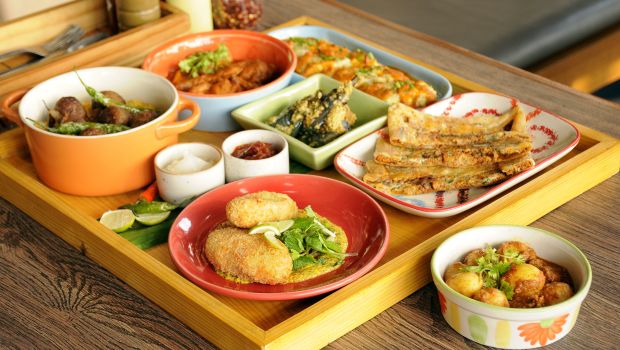What was 2017 all about?
The year that just came to an end was all about fermented foods, edamame noodles, African and Portuguese flavours, adaptogens, kitchen gadgets and home based chefs. Barring the last two, most of India was either already following the trend, as is the case with fermented foods which are a large part of our North East Indian cooking, or remained largely untouched by them. Heard about edamame noodles or saw it being served at more than 2 restaurants in all of India? Hence, proved.
2018's front runners include Peruvian food, edible flowers, turmeric and dehydrated foods. We, at NDTV Food, think the most significant trend of 2018 will be HEALTH. And, you really have to be living under a rock to not have noticed this around you already. How Health? Look around you, everyone is on a diet, trying to eat healthy, going for farm-to-table lunches, growing their own garden herbs, buying as much organic as they can afford, trying new millets and consciously avoiding junk as much as possible. To rephrase what we just said, the biggest Food Trend of 2018 will continue to be about eating well for your mind and body. It will be much more than vanity lead weight loss; our connect and understanding of flavours, spices, ingredients will run deeper and we will be so much luckier for it.

We, at NDTV Food, think the most significant trend of 2018 will be HEALTHHere are 2018's top food trends that we will see around us the most:
1. Neuro Nutrition, Not Just Calories
An idea gaining popularity along with the rise of healthy eating is that of Neuro Nutrition - a concept that has healthy eating at its core. We know what we eat has a far reaching effect on us than just satiating the taste buds. A brain that is fed the right foods can go a long way in managing moods swings, handle stress, take on the physical and emotional ups and downs of a modern lifestyle and even help you sleep better. There is growing recognition around this, and as mental health issues gain acceptance globally, eating well for the mind will gain popularity too.
2. Going Back to Your Flavour Roots
'Eat what your grandmother ate' is something we heard many of the country's top nutritionists say in 2017. This year, many more will follow this trend. A certain appreciation for heritage millets and old-world recipes is making its way back into home kitchens. Blame it on the rise of lifestyle diseases or our love for everything traditional, but millets like jowar and bajra will be used in cakes, cookies, muffins and crackers extensively this year. Home Chefs, another growing trend albeit not new anymore, will drive this as they run smaller kitchens where the recipe for success is a mix of experimentation and quality control.

Certain appreciation for heritage millets and old-world recipes is making its way back into home kitchens3. Heath of the Planet
Just because we cannot change everything overnight does not mean baby steps towards conservation cannot, and must not, be taken. A lot of hotels and restaurants, both big and small, are trying to push a localized approach to sourcing their ingredients. So while lamb chops from Australia and salmon from Norway will continue to feature on restaurant menus, more and more Indian restaurants will procure local fruits and veggies and cook as per availability.
One of the interesting dishes that Chef Dhruv Oberoi from Olive Qutub in New Delhi came up with recently includes indigenous leaves like jute, ceylon spinach, red and green amaranth and moringa. "'After visiting many farmers, we realized we are missing out on a lot of green leaves from our own country. For example, I didn't know that jute has leaves and that it's absolutely wonderful to use as a combination with meats and other vegetables.' says Chef Oberoi.

AmaranthCreating seasonal specials, as a matter of fact, is a trend in itself and often provides creative Chefs a chance to experiment with the season's best ingredients that may not be available the year round.
Now, for concepts and trends that will affect you and me as we dine out in 2018. There will always be old hangouts, but luckily there will be many new entrants to the ever booming restaurant scene across Indian cities and towns. Hopefully, these new places will bring together a cracking combination of great food and service to keep customers coming back way beyond 2018.
4. Experience, Not Food Alone
"Restaurants will focus on the experience more than food alone", says Vir Sanghvi. Perhaps, this can be seen in the success of restaurants like SodaBottleOpenerWala and Priyank Sukhija's Lights Camera Action at Delhi's Haus Khas Village. 2018 will see Indian restaurateurs focus more on front of the house than ever before. The service, staff, design will also drive customers to these places. "Look at Zorawar Kalra's empire of restaurants that are built as chef-agnostic. The menu is amazing, no doubt. But the overall experience at his restaurants is what keeps you going back for more. Farzi café and Masala Library, and more recently Kode, are great examples of this vision and trend."

Restaurants will focus on the experience more than food alone5. No, Regional is Not Big!
Most people who have lived in Delhi will love how Yeti, a small eatery serving Himalayan flavours broke into the restaurant scene many years ago. Then, there's Mahabelly in Saket that serves delightful flavours from Kerala. But not too many restaurants that focus on food from just one region have managed to grow beyond one or two restaurants. This is what makes the growth of multi-cuisine restaurants a big trend.
Successful chains like Social from Impresario, Café Delhi Heights by Vikrant Batra or the Olive chain by AD Singh have replicated the model across many cities, thanks to a wider menu that appeals to many. "Everyone likes taking about regional food, but practically speaking, most restaurants that do well are multi-cuisine in nature, regional restaurants do not necessarily have the potential to scale up", says Vir Sanghvi. There could be a handful of restaurants that follow the regional route but those do not constitute a trend. Mr Sanghvi continues to add, "Anjan Chatterjee's O Calcutta could be an exception here but that is not a new restaurant, and how many new Bengali food restaurant chains have come up since?".

There could be a handful of restaurants that follow the regional route Photo Credit: Monkey Bar
7. The (continued) Emergence of Social Media Chefs
One of the best things social media has done for the F&B industry worldwide, is to give a platform to chefs to reach out to their followers, talk about their kitchen escapades and make business related announcements directly to people who would be frequenting their outlets. India's greatest chefs like Imtiaz Quereshi, Hemant Oberoi, Ananda Solomon or Manish Mehrotra (during his initial years) were seldom seen outside their kitchens. Yes, there were books and TV shows back then, household names like Nita Mehta, Tarla Dalal and of course India's most popular TV Chef Sanjeev Kapoor, can all attribute their long successful careers to these. But there was no Facebook, no Twitter or live videos! Today social media has created many successful food stars that are doing a darn good job of creating a business model that revolves around their social media following. Saransh Goila is a great example of someone who brought his passion for food to social media with much rigour and honesty.
"Social media is the biggest tool you have now to tell people your story. As a creative person, this allows me to show people who I really am. There are no external barriers and you can connect with your audience at a personal level". Saransh also feels that the culture of idol worship is a thing of the past now, and no matter which field you are in, as a media personality being accessible on social platforms like Facebook and Twitter make you far more relatable to younger audiences.But it all looks so easy from the outside, and many would think that all you have to do is become popular on social media and rest is just cakewalk. "Yes, the growth options are immense, but you still need to have product in the market to prove your talent, be it a book, a TV show or a restaurant". Saransh heads to Melbourne this march for a pop-up featuring his signature Goila Butter Chicken. He has been invited by George Colambirias of Master Chef Australia fame, something Saransh doesn't think would have been possible this early in his career, had it not been for the limitless possibilities of social media.

Social media is the biggest tool you have now to tell people your story8. Online Table booking
Trip Advisor's India Gastronomy Survey of 2017 revealed that Indians are increasingly reserving a table prior to visiting a restaurant. The survey further showed that Indians are mostly last minute bookers with more than 60% respondents saying that they make the reservation on the same day. With increasing convenience of booking a table through apps, more people are set to book and reserve a dining experience on the go. Just like in the food delivery space, here too technology is set to bring convenience right to your doorstep.
2017 has been a great year for food around the world. Let's hope 2018 is equally big.








